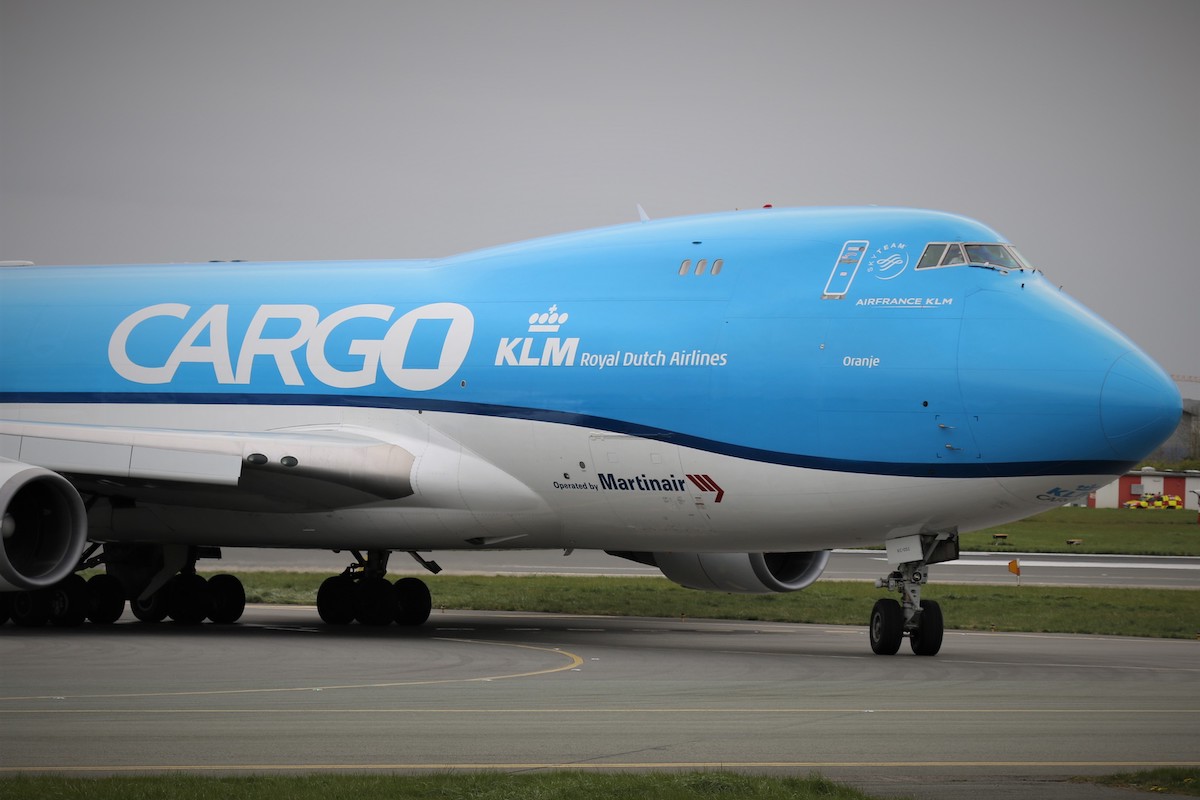Cargo Led Air Traffic Recovery in 2021

Photo Credit: Air freight was a bright spot for airlines in 2021. Flickr / Cityswift - Ireland
Air cargo proved a lifeline again for airlines in 2021, as global international passenger traffic remained mired at a fraction of its 2019 levels, data from the trade group IATA reveal.
Cargo traffic, measured in cargo ton kilometers or CTKs, was up 6.9 percent for the full year compared to 2019, data released on Tuesday showed. On the other hand, passenger traffic only recovered to 42 percent of levels seen two-years ago.
“Cargo continued to be a very important source of revenue and cash for the airline industry," said IATA Director General Willie Walsh during a briefing Tuesday.
The strength of cargo demand in 2021 was already abundantly clear. It was so great that Airbus, long second fiddle to Boeing in the air freighter market, launched a dedicated freighter version of its A350 with an entry-into-service target of 2025. Lessor Air Lease Corp. launched the aircraft in November with Air France, CMA Group and Singapore Airlines both ordering the jet in subsequent months. And at Korean Air strong cargo demand drove continued profits — a rarity for the industry since the pandemic began — through at least the third quarter.
On the passenger side, domestic markets again outperformed international markets during the year. Domestic passenger traffic recovered to nearly 72 percent of 2019 levels, while international only recovered to just under 25 percent. Russia had the most robust domestic market with traffic nearly a quarter higher in 2021 than two years ago, while traffic in the Brazilian, Chinese, and U.S. markets was in the 70 percent recovered range.
Internationally, most markets recovered in the range of 28-35 percent of two years ago in 2021. The exception was Asia-Pacific where traffic stood at just 7 percent of 2019 mostly due to the continuing strict border restrictions throughout the region.
"The region has become increasingly isolated" because of the restrictions, said Walsh. He added that he has "a lot of sympathy for carriers like Cathay Pacific," which is hamstrung by the Hong Kong government's renewed restrictions. Cathay forecast Monday that it is again burning cash after achieving positive cash flow in the second half of 2021.
On a positive note, the Omicron variant that has hit airline operations hard since the Christmas and New Year's holidays is not expected to materially change the outlook for 2022. IATA Chief Economist Marie Owens Thomsen said she expects the recovery to return to its previous trajectory in March with little or no lingering effect from the coronavirus variant beyond February. This echoes the recent outlooks of American Airlines, Delta Air Lines, and United Airlines.
Fuel and a skilled labor shortage are two non-pandemic challenges for airlines in 2022. Walsh said the run up in Brent crude prices could put upward pressure on fares if it continues through the year. And on the labor front, he warned that the exodus of skilled workers — particularly pilots and mechanics — from the industry during the pandemic may, for the first time since he joined Aer Lingus in 1979, mean airlines may face an actual skilled worker shortage. Walsh said he was "optimistic" that airlines could woo new and former skilled talent to close the gap.
The skilled labor shortage in the U.S. is being felt most acutely by regional airlines. Executives at American, Delta, and United have all cited a lack of pilots for recent cuts to regional flying. And regional CEOs said in September that they also face challenges hiring mechanics.
